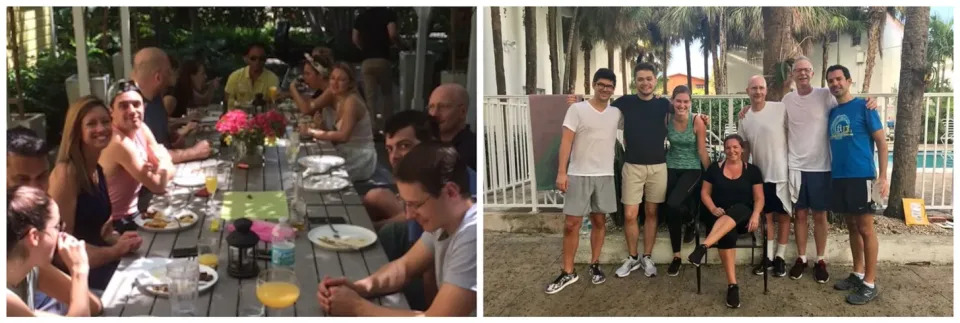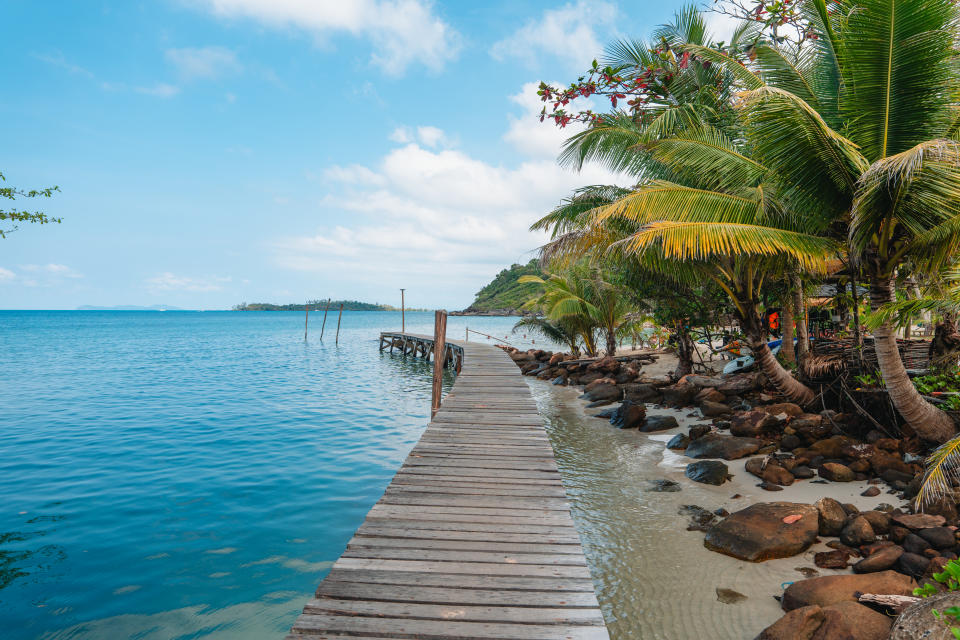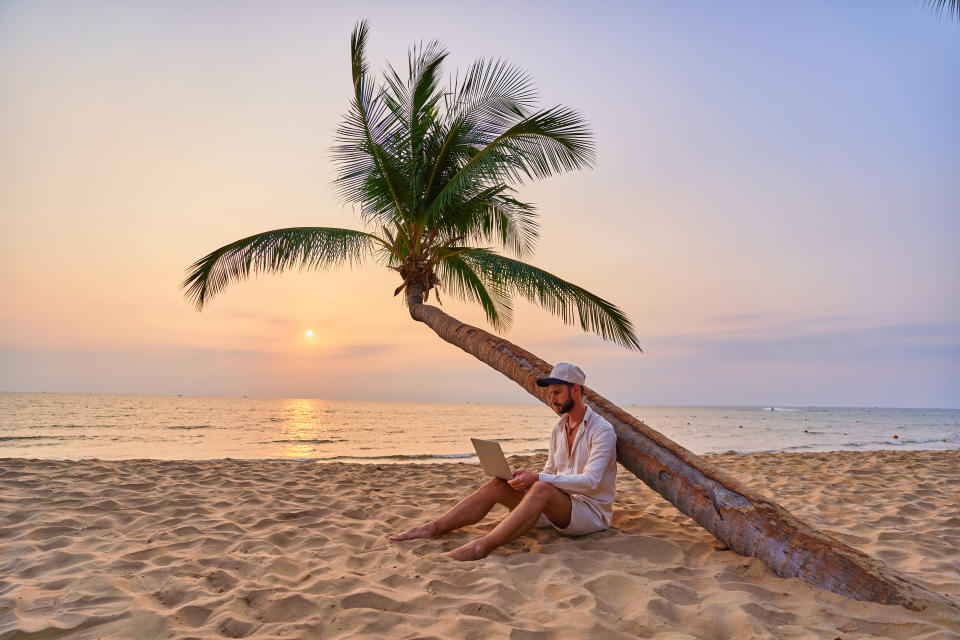There’s more than one way to be a digital nomad
5 min readMy husband Michael and I left Seattle to become nomads at the end of 2017, with a plan to indefinitely travel the world.
We spent our first full year living in a series of “coliving” facilities — lodging specifically designed for nomads and long-term travelers. Coliving is best described as a kind of upscale hostel: everyone has a private bedroom and bathroom, but there’s also usually a shared kitchen, coworking space, and recreation areas.

Group dinners and morning workouts at our first coliving place.
Some of these places were really interesting, and we made many great friends — we especially liked the shared meals. But a few years later, during Covid, most coliving places shut down, and we were ready for a bit more privacy anyway.
Advertisement
Advertisement
Advertisement
So we spent much of the first year of Covid doing housesitting, mostly through TrustedHousesitters.com.
Michael and I liked living this way too, although we quickly discovered that “housesitting” can involve a surprising amount of work, especially in America where many pet owners have apparently become, er, unusually attached to their pets and have what I consider to be, uh, unrealistic expectations of care.
Toward the end of the first year of Covid, we holed up for nine months in a lovely seaside villa in Puerto Vallarta, Mexico.
Once Michael and I were vaccinated and traveling again, we discovered that, given the complete flexibility of our schedule, we could get great deals on cruises, especially in the shoulder seasons. Now we spend two to three months every year living on cruise ships, also using them for transportation to our destinations, saving us money on airfare.
Advertisement
Advertisement
Advertisement
The point is, there are a lot of different ways to be a nomad.
There are even a lot of different ways for the same person to be a nomad. We don’t know any long-term nomad who does it the same way all the time. That’s why so many nomad guidebooks and instructional videos frustrate me a little.
The stereotypes are just that: stereotypes.
For example, there’s a stereotype that a nomad lives in a bamboo bungalow on a beach in Thailand.
(In addition to our various other lodgings, we’ve also done the bamboo-bungalow-on-a-Thai-beach thing. There were too many ants, and I ended up getting Dengue Fever from the mosquitos. But we still loved the experience. I mean, come on.)

There’s another stereotype that nomads are all young, or tech-bros, or online “influencers.”
(Michael and I love proving these particular stereotypes wrong. In fact, to our great surprise, we’ve discovered there’s a massive contingent of older nomads — either traditional retirees in their 60s and 70s or FIRE/early retirement folks in their 40s and 50s. I suspect we might even be a majority of all nomads, although these folks seem poorly represented online, and they’re also less likely to be seen in physical nomad spaces.)
One more stereotype of nomads is that we blaze through the world, seeing dozens of countries in a single year.
(Some nomads travel fast, at least for the first year or so. But Michael and I consider ourselves “slomads,” traveling sloooowly through the world. Typically, we’ll go to a new country and play tourist for a week or so in the Big City — and then move to a second or third-tier city in the same country and rent an apartment for another month or two.)
Advertisement
Advertisement
Advertisement
Finally, there’s the biggest nomad stereotype of all, that our lives are ones of constant adventure and romance, and we all enjoy an eternal summer.
And, well, this stereotype is kinda true. We nomads do tend to follow the sun — except maybe for a couple of weeks around Christmas where we might head somewhere to enjoy the snow.

In photos, nomads are always seen working on laptops in cool locations. And, well, that’s accurate.
As for the rest of it, I guess I’ve drunk the nomad Kool-Aid.
A non-nomad friend once said to me, “You don’t really get to know the countries where you live or experience the downsides. You’re only there for two or three months! It’s all popcorn and roses for you because you never get beyond the ‘honeymoon’ stage.”
At first, I was offended — partly because I think Michael and I do go fairly deep into some of these countries. If nothing else, we go deeper now than when we used to take two-week vacations.
Advertisement
Advertisement
Advertisement
Then I thought about what my friend had said, how Michael and I were just going from honeymoon to honeymoon.
And I realized: how is that bad? Honeymoons are awesome. Isn’t that their whole point? I’ve already done my share of cold, hard slogs in life, and at this point, I’m okay with a non-stop stream of honeymoons, especially since it’s costing us about half of what we used to spend living in Seattle.
I’ll go far out on a limb and say that I think popcorn and roses are both pretty great too.
Now maybe honeymoons aren’t your thing, or you’re looking for some kind of character-building challenge in life. This is okay! Then again, just because something is fun doesn’t mean it can’t also be challenging and even build character.
Advertisement
Advertisement
Advertisement
The greater point is that there is no one way to be a nomad — just like there’s no one way to be a parent. Or build a career. Or make a relationship work.
As with almost everything in life, successful nomading means doing whatever works for you — whether that involves coliving, housesitting, living on cruise ships, slomading, or enduring ants and mosquitoes (and enjoying the amazing sunsets) in a bungalow on a Thai beach.
In the end, it’ll probably be some combination of the above, and also some other things that Michael and I have yet to try. And when whatever you’re doing stops working for you, you’ll move on to something else.
Nomading can mean many different things, and I haven’t even gotten around to what it means in the philosophical sense.
But I should probably leave that for some other essay.



